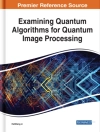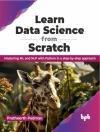Apply the basics of security in serverless computing to new or existing projects. This hands-on guide provides practical examples and fundamentals. You will apply these fundamentals in all aspects of serverless computing: improving the code, securing the application, and protecting the infrastructure. You will come away having security knowledge that enables you to secure a project you are supporting and have technical conversations with cybersecurity personnel.
At a time when there are many news stories on cybersecurity breaches, it is crucial to think about security in your applications. It is tempting to believe that having a third-party host the entire computing platform will increase security. This book shows you why cybersecurity is the responsibility of everyone working on the project.
What You Will Learn
- Gain a deeper understanding of cybersecurity in serverless computing
- Know how to use free and opensource tools (such as the Node Package Manager, ESLint, and VSCode) to reduce vulnerabilities in your application code
- Assess potential threats from event triggers in your serverless functions
- Understand security best practices in serverless computing
- Develop an agnostic security architecture while reducing risk from vendor-specific infrastructure
Who This Book Is For
Developers or security engineers looking to expand their current knowledge of traditional cybersecurity into serverless computing projects. Individuals just beginning in serverless computing and cybersecurity can apply the concepts in this book in their projects.قائمة المحتويات
Chapter 1: Introduction to Cloud Computing Security.- Chapter 2: Performing a Risk Assessment.- Chapter 3: Securing the Code.- Chapter 4: Securing Interfaces.- Chapter 5: Configuring the Application Stack.- Chapter 6: Restricting Permissions.- Part IV: Monitoring and Alerting.- Chapter 7: Account Management.- Chapter 8: Secrets Management.- Chapter 9: Authentication and Authorization.- Chapter 10: Monitoring Security Events.- Chapter 10: Protecting Sensitive Data.- Chapter 11: Monitoring, Auditing, and Alerting.- Chapter 12: Additional Considerations.- Chapter 13: Finalizing the Risk Assessment. – Appendix A: List of Acronyms.- Appendix B: Set Up Instructions.- Appendix C: Exercises Review.
عن المؤلف
Miguel Calles is a freelance cybersecurity content writer. He has an information assurance certification, and works as an engineer on a serverless project. He started in cybersecurity in 2016 for a US government contract, and has been doing technical writing since 2007, and has worked in various engineering roles since 2004. Miguel started his interest in cybersecurity when he was in middle school and was trying to backward engineer websites.












